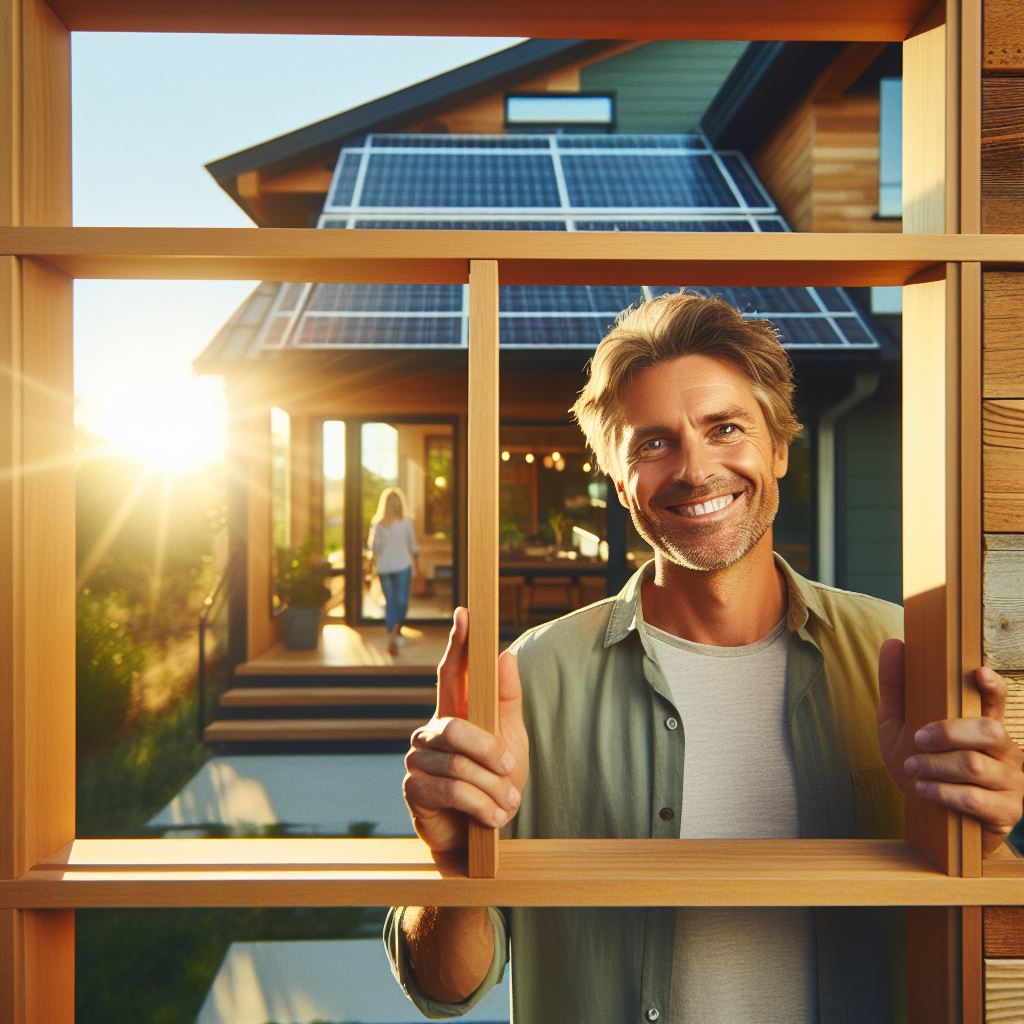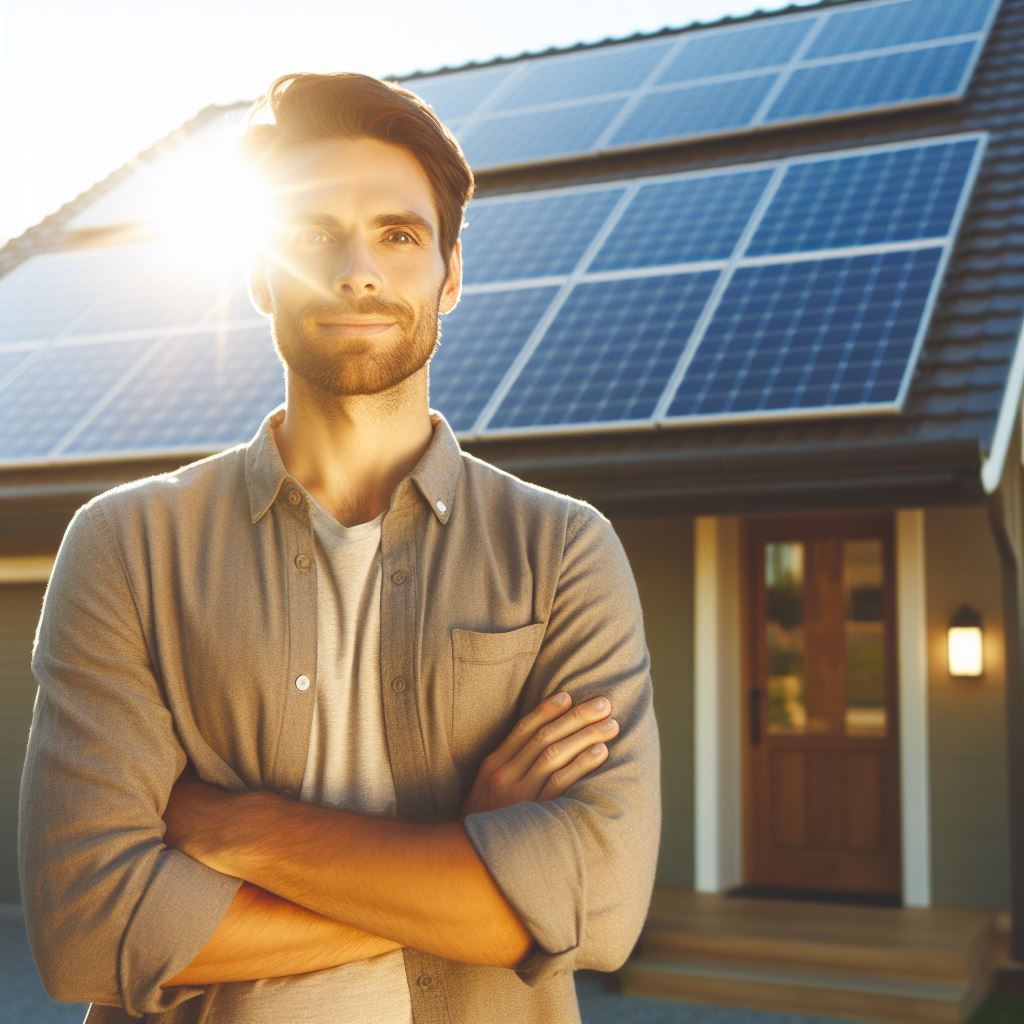Introduction
The use of eco-friendly materials in the construction industry is becoming increasingly important.
Sustainable building practices are gaining interest and demand in the United States. Exploring the shift towards eco-friendly materials is vital for US building.
The environmental impact of traditional construction methods has raised concerns about sustainability and resource depletion.
As a result, the focus has shifted towards eco-friendly materials that are renewable, recyclable, and non-toxic.
From energy-efficient insulation to recycled metal roofs, eco-friendly materials offer numerous benefits.
They can reduce carbon emissions, conserve natural resources, and enhance indoor air quality.
With the increasing awareness of climate change and the need to reduce our carbon footprint, sustainable building practices have gained significant traction in recent years.
Architects, builders, and homeowners are increasingly opting for eco-friendly materials to create environmentally-conscious structures.
The United States, being one of the largest consumers of building materials, has a responsibility to shift towards more sustainable practices.
The exploration of eco-friendly materials in US building is crucial to meet environmental goals and contribute to a healthier planet.
By embracing sustainable practices, the construction industry can mitigate the environmental impact of buildings and pave the way for a greener future.
The demand for eco-friendly materials will continue to rise as people become more aware of the benefits they offer, both in terms of reducing environmental harm and creating healthier living spaces.
In essence, the importance of using eco-friendly materials in the construction industry cannot be overstated.
The increasing interest and demand for sustainable building practices in the United States highlight the need to explore the shift towards these materials.
It is time for US building to prioritize eco-friendly options for a more environmentally-conscious future.
Current Trends in US Building
Predominant construction materials currently used in the US
When it comes to construction materials in the US, there has been a shift towards more environmentally-friendly options.
Traditional materials like concrete and steel have long dominated the industry, but their impact on the environment cannot be ignored.
Concrete, for example, is responsible for a significant amount of carbon dioxide emissions during its production.
Steel production also requires a high amount of energy and contributes to greenhouse gas emissions.
Recent shift towards environmentally-friendly building practices
However, in recent years, there has been a noticeable shift towards eco-friendly building practices.
Architects, contractors, and homeowners are now prioritizing materials that have a lower environmental impact.
One such material gaining popularity is bamboo.
Bamboo is a fast-growing grass that can be harvested sustainably and regrows quickly, making it an excellent alternative to traditional wood.
Another eco-friendly material that has gained traction is recycled steel.
By using recycled steel, less energy is required, reducing its carbon footprint and minimizing the use of virgin materials.
Solar panels have also seen a surge in demand.
They harness the power of the sun to generate electricity, reducing reliance on fossil fuels and lowering greenhouse gas emissions.
In addition to materials, building techniques have also become more environmentally conscious.
For instance, green roofs are becoming increasingly popular.
These rooftops are covered in vegetation, helping to reduce energy consumption and improve air quality.
Thermal insulation is another aspect of eco-friendly building practices.
Proper insulation helps to reduce the need for heating and cooling systems, leading to energy savings.
Statistics and examples that support the shift towards eco-friendly materials
The shift towards eco-friendly building practices is supported by statistics and examples.
According to the US Green Building Council, the green building market is projected to reach $173.5 billion by 2025.
One notable example of eco-friendly construction is the Bullitt Center in Seattle.
It is one of the greenest commercial buildings in the world, using 83% less energy than a typical office building.
Furthermore, many states in the US have started implementing stricter building codes and regulations.
California, for instance, requires all new residential buildings to be equipped with solar panels.
In fact, the US building industry is experiencing a significant shift towards eco-friendly materials and practices.
Bamboo, recycled steel, and solar panels are just a few examples of the alternatives being embraced by architects and contractors.
With increasing concerns about climate change and environmental sustainability, it has become essential to prioritize green building practices.
The statistics and examples mentioned highlight the positive impact of these shifts and emphasize the need for continued progress in the industry.
Read: Tiny Homes Surge: A 2024 US Market Review
Benefits of Eco-Friendly Materials
Using eco-friendly materials in construction offers numerous advantages.
These materials not only contribute to a sustainable environment but also provide several benefits for both the occupants and the overall economy.
Environmental Benefits
- Reduced Carbon Emissions: Eco-friendly materials, like recycled steel and reclaimed wood, require less energy to produce, reducing carbon emissions and combating climate change.
- Conservation of Resources: By using materials such as bamboo and cork, we can conserve valuable natural resources like timber, which takes years to replenish.
- Waste Reduction: Incorporating recycled materials into construction minimizes the amount of waste that ends up in landfills, promoting a circular economy.
Health Benefits
- Improved Indoor Air Quality: Eco-friendly materials, such as low-VOC paints and formaldehyde-free insulation, help maintain better indoor air quality, leading to healthier living spaces.
- Reduced Exposure to Toxins: Traditional building materials often contain harmful substances, such as lead and asbestos.
Eco-friendly alternatives eliminate these toxins, protecting occupants from exposure.
Economic Benefits
- Lower Energy Costs: Eco-friendly construction materials, including energy-efficient windows and insulation, can significantly reduce energy consumption, resulting in lower utility bills for building owners and occupants.
- Increased Property Value: Buildings constructed using eco-friendly materials often have higher market value due to their sustainable features, attracting environmentally conscious buyers and tenants.
In addition to these specific benefits, using eco-friendly materials also supports the development of a green economy, creating new job opportunities and fostering innovation in the construction industry.
Moreover, governments and regulatory bodies are encouraging the use of sustainable materials through certifications and incentives.
For instance, LEED (Leadership in Energy and Environmental Design) certification recognizes buildings that prioritize eco-friendly materials and practices, providing recognition and potential tax benefits to property owners.
It is crucial to note that the advantages of eco-friendly materials extend beyond individual construction projects.
As more buildings incorporate sustainable elements, a collective impact is made on the environment, fostering a greener and healthier future for the entire community.
In short, using eco-friendly materials in construction offers a multitude of benefits.
From reducing carbon emissions and conserving resources to improving indoor air quality and increasing property value, these materials contribute to a sustainable environment while providing health and economic advantages.
Embracing eco-friendly practices today ensures a brighter and more sustainable tomorrow.
Read: Smart Homes: The Future of US Real Estate
Types of Eco-Friendly Materials
When it comes to constructing eco-friendly buildings, using sustainable materials is essential.
These materials are specifically chosen for their minimal impact on the environment and their ability to promote energy efficiency and waste reduction.
Sustainable wood products, including certified lumber and reclaimed wood
Sustainable wood products are one of the most commonly used eco-friendly materials in construction.
Certified lumber, which ensures responsible forest management practices, and reclaimed wood, which repurposes old wood from buildings, are both excellent options.
Low VOC (volatile organic compound) paints and finishes
Another important aspect of eco-friendly construction is using low VOC paints and finishes.
VOCs are harmful chemicals that can contribute to indoor air pollution.
Choosing low VOC alternatives helps improve indoor air quality for residents.
Recycled materials, such as recycled steel, glass, and plastic
Using recycled materials in construction is a great way to reduce waste and conserve resources.
Recycled steel, glass, and plastic can be used for various purposes, including structural components, insulation, and finishes.
Energy-efficient windows and insulation materials
In addition to using sustainable and recycled materials, energy-efficient windows and insulation materials play a crucial role.
These products are designed to minimize heat transfer, creating a comfortable indoor environment while reducing the need for excessive heating or cooling.
Renewable energy sources, such as solar panels and geothermal systems
Lastly, incorporating renewable energy sources into a building’s design is an effective way to promote sustainability.
Solar panels can generate clean electricity, while geothermal systems utilize the constant temperature underground to regulate the building’s temperature.
Overall, eco-friendly construction materials play a significant role in reducing the environmental impact of buildings.
By utilizing sustainable wood products, low VOC paints, recycled materials, energy-efficient windows, and renewable energy sources, builders can create more environmentally conscious and energy-efficient structures.
Read: 2024’s Top Green Building Trends in the US

Government Initiatives and Incentives
When it comes to promoting eco-friendly materials in the US building industry, government initiatives and incentives play a crucial role.
These programs are designed to encourage the use of sustainable construction practices and ensure a greener future for our planet.
Government Programs and Incentives
The government is actively involved in promoting the use of eco-friendly materials through various programs and incentives.
One of the ways it does this is by offering tax credits and rebates for green building projects.
These financial incentives help offset the higher costs associated with eco-friendly materials and encourage their adoption in the construction industry.
Furthermore, regulations and certifications such as LEED (Leadership in Energy and Environmental Design) have been instrumental in promoting sustainable construction practices.
LEED certification is a globally recognized standard for green building, ensuring that a project meets certain environmental and energy efficiency requirements.
By prioritizing eco-friendly materials and designs, builders can earn LEED credits and achieve higher levels of certification.
Success Stories: Government Initiatives for Sustainable Construction
Several successful government initiatives have been implemented to encourage the use of eco-friendly materials in construction projects.
One notable example is the California Green Building Standards Code, also known as CALGreen.
This code mandates the use of environmentally sustainable materials and practices in new construction and retrofit projects.
It addresses a wide range of areas, including energy efficiency, water conservation, and indoor air quality.
Another noteworthy initiative is the Energy Policy Act of 2005, which includes the Energy Efficient Commercial Buildings Tax Deduction (Section 179D).
This deduction provides tax incentives for building owners who invest in energy-efficient systems and materials.
It has successfully incentivized the adoption of eco-friendly materials and technologies in commercial buildings across the country.
Additionally, the US Department of Energy’s Building Technologies Office (BTO) has been actively supporting research and development projects focused on eco-friendly materials.
Through funding programs and collaborations with industry partners, the BTO aims to accelerate the adoption of advanced building materials that offer improved energy efficiency and environmental performance.
Looking Towards a Sustainable Future
With government initiatives and incentives, the use of eco-friendly materials in the US building industry is steadily increasing.
These programs not only benefit the environment but also contribute to the creation of green jobs and a more sustainable economy.
As more builders and developers recognize the importance of sustainable construction practices, the demand for eco-friendly materials will continue to grow.
In general, government initiatives and incentives play a vital role in promoting eco-friendly materials in the US building industry.
By offering tax credits, rebates, and certifications, the government encourages the adoption of sustainable construction practices.
Success stories like CALGreen and the Energy Efficient Commercial Buildings Tax Deduction demonstrate the positive impact of these initiatives.
As we look towards a sustainable future, it is crucial to continue supporting and expanding these programs to ensure a greener and more environmentally conscious building sector.
Read: US Commercial Real Estate: Interest Rates
Challenges and Solutions
Challenges associated with the adoption of eco-friendly materials in US building
Adopting eco-friendly materials in US building poses several challenges, but innovative solutions and advancements are helping overcome these obstacles.
Higher Initial Costs Compared to Traditional Materials
One of the major challenges in using eco-friendly materials is their higher initial costs compared to traditional materials.
This cost difference often discourages builders from opting for sustainable alternatives.
However, solutions such as government incentives and tax breaks for using eco-friendly materials are being implemented to offset these higher costs.
This encourages builders to choose sustainable options and helps make them more affordable in the long run.
Limited Availability and Accessibility of Eco-Friendly Materials in Certain Regions
Another challenge faced in the adoption of eco-friendly materials is their limited availability and accessibility in certain regions.
Some builders may be unable to access these materials due to logistical constraints or lack of local suppliers.
In order to address this challenge, efforts are being made to increase the production and distribution of eco-friendly materials.
Local governments and organizations are partnering with manufacturers to ensure a wider availability of sustainable options across various regions.
Innovative Solutions and Advancements in Eco-Friendly Materials
To overcome the challenges associated with the adoption of eco-friendly materials, innovative solutions and advancements are constantly being made in this field.
For example, researchers are developing new materials made from renewable resources such as bamboo, recycled plastics, and even agricultural waste.
These materials are not only eco-friendly but also offer comparable or even superior performance to traditional materials.
Advancements in technology also play a vital role in overcoming challenges.
For instance, the development of more efficient production techniques reduces the overall cost of eco-friendly materials, making them more accessible to builders.
Examples of Successful Projects Incorporating Eco-Friendly Materials
Despite the challenges faced, several successful projects have showcased the incorporation of eco-friendly materials while overcoming various obstacles.
One such example is the Bullitt Center in Seattle, which is considered one of the greenest office buildings in the world.
It utilizes locally sourced and sustainable materials, including FSC-certified wood and a highly efficient rainwater harvesting system.
Another notable project is the Edge, a sustainable office building in Amsterdam.
It incorporates advanced eco-friendly materials like photovoltaic panels and energy-efficient glass facades, reducing energy consumption significantly.
These successful projects not only demonstrate the possibilities of using eco-friendly materials but also inspire others to embrace sustainable practices in construction.
In a nutshell, while challenges such as higher initial costs and limited availability persist, the adoption of eco-friendly materials in US building is steadily increasing.
Through innovative solutions and advancements, coupled with successful project examples, the industry is overcoming obstacles and moving towards a more sustainable future.
Conclusion
Using eco-friendly materials in US building offers numerous benefits and is of utmost importance.
The shift towards sustainable construction practices is gaining momentum.
It is crucial for everyone undertaking construction or renovation projects to consider eco-friendly options.
By choosing such materials, we contribute to a better future for the environment and our communities.
There is a positive outlook for the future of eco-friendly building in the United States, as more people recognize the long-term advantages and strive to make environmentally conscious choices.
Let us work together to create a sustainable and greener world through eco-friendly construction practices.




